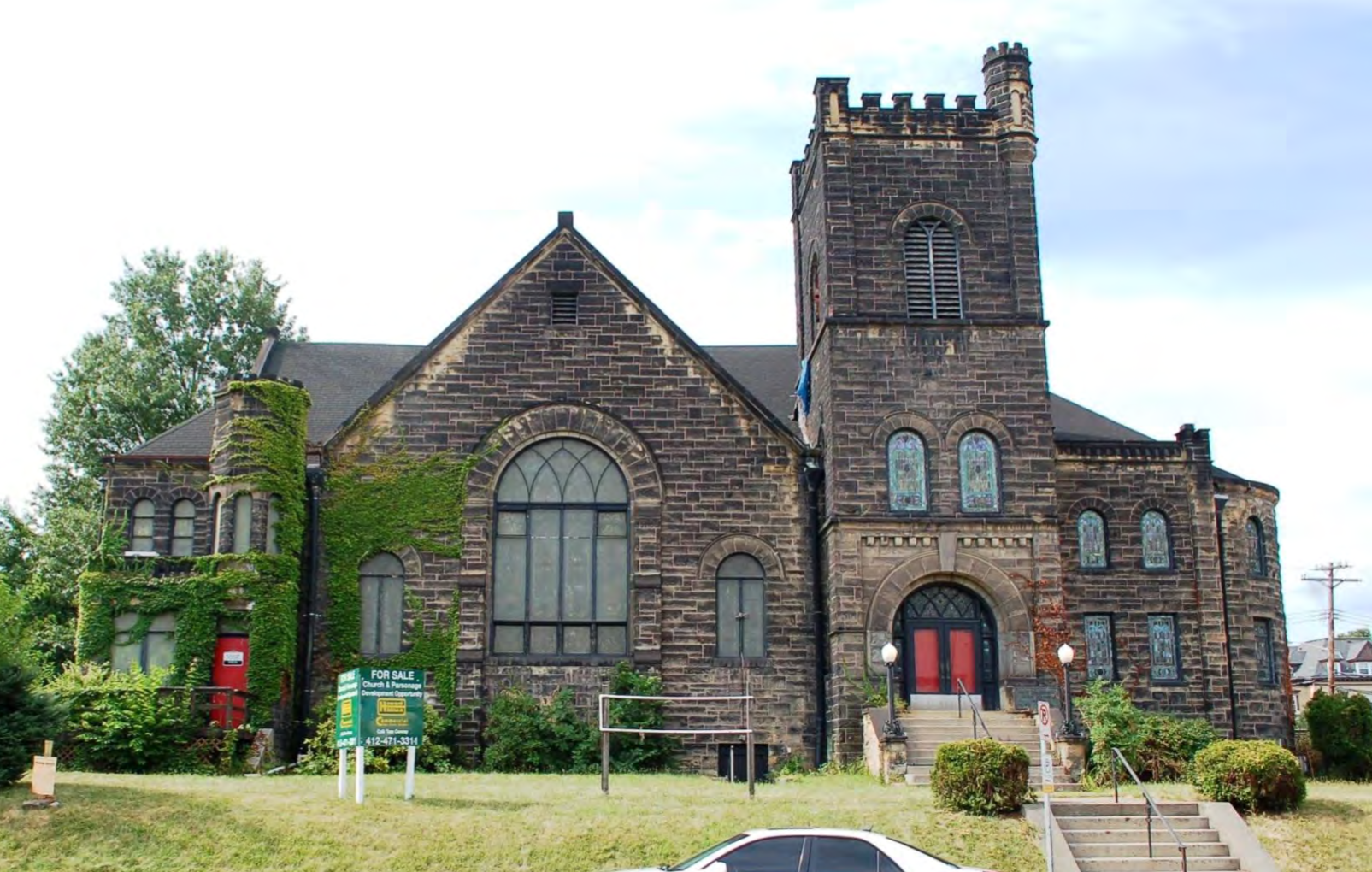The very name “Spring Hill” indicates that this spring represents—what used to be—the neighborhood’s most recognizable feature. The spring provided a sense of identity and pride among the Spring Hill residents as they saw how many people, including hospitals, enjoyed and sometimes depended on their water. Bee Fohl reflected, “That is a landmark. Focal point of the whole hill...it’s even in the name. Spring Hill has layers as you go up and the spring is right in the middle. It was the highlight to me of the hill. The spring united all areas of Spring Hill and the Cityview neighbors. It was a social meeting place where you chatted with your neighbors as you waited in line and filled up.”
Former St. George Church
There are exceedingly few buildings in Pittsburgh that can equal 823 Climax Street in presence and command of site. From nearly any vantage point within the community, the building, its twin spires, and its blood-red brick are prominently visible.
Sited at the base of a steep hill, the juxtaposition of this grand basilica against the backdrop of small, wooden vernacular houses is almost European, and yet distinctly Pittsburgh. For 104 years the building has anchored the community of Allentown. It embodies the history of its community and holds promise for its future. The building transcends the definition of landmark. The location and distinct physical appearance of 823 Climax Street absolutely represents an established and familiar feature of Pittsburgh’s Allentown neighborhood. Without it, Allentown would suffer an immeasurable loss to its sense of place.
Leo Thomas for George Boos Studio Windows
The Tu Es Petrus and St. George and the Dragon stained glass windows present in the former St. George’s Church can be directly attributed to one of Meyer & Co.’s most prominent glaziers, Leo Thomas. While Thomas’ contributions are rare within the City of Pittsburgh, his work and the work of his parent studio, George Boos, is well known throughout Western Pennsylvania, the East Coast, and the MidWest. The nearest, and perhaps most numerous, collection of Thomas’s work exists in St. Paul’s Church in Butler, Pa. Here we can find roughly fifty eight windows designed by George Boos’ Studio with under the design supervision of Leo Thomas. It was here, collaborating with the renowned Pittsburgh architect John T. Comes, that both the firm and the designer would receive their first major recognition in the United States.
Albright United Methodist
The building is an exceptional example of the Eclectic Period of architectural design in the United States and Pittsburgh. Specifically, it is representative of the late 19th and early 20th century popularity of the Richardson Romanesque style in Pittsburgh.
6018 Penn Avenue
Produce Terminal
The character defining feature of the exterior façade (for the purposes of this nomination) is the 1533 ft. long linear façade removing almost a third of the structure significantly diminishes the key aspect of the building design. As the 1994 National Register survey form, page 37, states: "The Pennsylvania Railroad Fruit Auction Building is a landmark for its shear size" and "...the structure is the focal point of the Strip's wholesale district".








